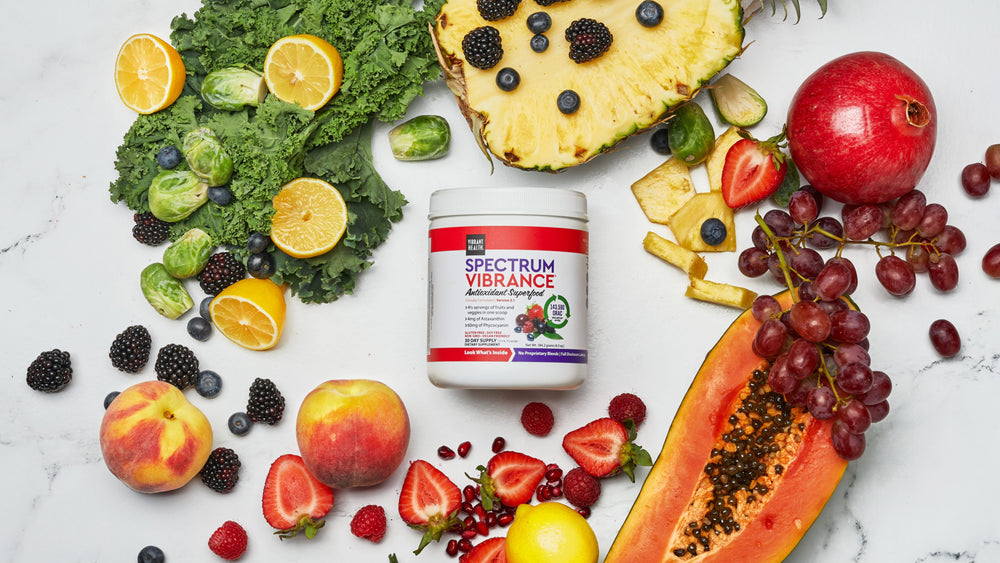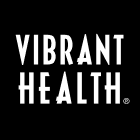
For the Love of Veggies: Why You Should Add More Vegetables to Your Diet Now and Our Go-To Summer Favorites
The warmer weather has us craving fresh produce big time, and we‚re always thinking of creative ways to enjoy more fruits and veggies. With so much produce coming into season this time of year, it's no wonder June is dubbed National Fresh Fruit and Vegetable Month!
And with National Eat Your Vegetables Day June 17th, summer is a great time to incorporate more veggies into your diet starting now. This week, on the Vibrant Health blog we‚re sharing all about the health benefits of vegetables, how many servings you should aim for, and our go-to summer favorites to enjoy all season long!
Why Veggies? Here‚s Why You‚ll Want to Stock Up This Summer
Our love for vegetables runs deep ‚ and for good reason. They're cost-effective, versatile and packed with flavor! Not to mention, vegetables have long been considered a key part of a healthy diet due to their impressive nutritional profile.
They're chock-full of nutrients (like Vitamin A and C), typically rich in dietary fiber and lower in calories while still packing a nutrient-rich punch. Vegetables are a key part of a healthy lifestyle, and studies have even shown consumption of certain vegetables‚ namely leafy greens and cruciferous veggies ‚ are associated with cardiovascular health (including superfood broccoli, which also has anticancer and antioxidant properties). Win, win!
While the current USDA Dietary Guidelines suggest an average intake of 2 ½ cups of veggies a day, they‚ve stated that roughly 90 percent of the U.S. population falls short on meeting this recommendation. Simply put, you should probably be eating more veggies!
That's one of the main reasons our team at Vibrant Health is so passionate about creating plant-based, nutrient-rich superfoods that makes getting your daily dose of fruits and vegetables more accessible ‚ and delicious. For instance, just a single scoop of our Spectrum Vibrance formula includes a whopping 4 servings of fruits and veggies (like brussels sprouts, kale and carrots). Green smoothies just got that much sweeter!

Fill Your Plate with These Seasonal Summer Vegetables
While we‚re advocates for squeezing in vegetables in whatever way you can, summer is the perfect time to load your plate with in-season veggies. Here are some of our seasonal favorites to add to your bag during your next trip to the grocery store or farmer‚s market!
- Summer Squash: a grilling staple to add vibrant color to any summer meal
- Zucchini: versatile enough to enjoy spiralized as zoodles, grilled or even mixed into your smoothie (Try our Chocolate Mint Smoothie here!)
- Cucumber: this hydrating veggie is a summer must for salads, tzatziki dip or dipped into your favorite hummus
- Corn: grill it, enjoy it in a salad or try it Elote style with lime, chili and cayenne!
- Green Beans: Eat them raw straight from the farmer‚s market or lightly saut©ed with a little olive oil, lemon and garlic
- Greens: Load up on a variety of seasonal greens like arugula, spinach, kale and lettuces to make the most of your summer salads
- Bell peppers: stuff them, dunk ‚òem into your favorite dip or grill them with your kebabs
- Radishes: Serve them raw to give your summer salads a nutrient-rich, colorful boost!
Try these grilling tips for more ways to cook with vegetables this summer!
Let us know how you‚re incorporating veggies into your summer menu by tagging us on social @VibrantHealth
DISCLAIMER: This information is not intended as a substitute for advice provided by a competent health care professional. You should not use this information in diagnosing or treating a health problem. No claim or opinion in this blog is intended to be, nor should be construed to be, medical advice. If you are now taking any drugs, prescribed or not, or have a medical condition, please consult a competent physician who is aware of herb/drug interactions before taking any herbal supplements. The information presented herein has not been evaluated by the FDA or the Department of Health and is not intended to diagnose, prevent, cure, mitigate or treat any disease or illness.

Why Trust Vibrant Health?
At Vibrant Health, we’ve been pioneers in science-backed nutrition for over 30 years, formulating transparently sourced superfood supplements that prioritize real results. Our blog is an extension of that commitment—a trusted resource for expert-driven wellness insights.
Every article is crafted with nutrition expertise, backed by the latest scientific research, and reviewed by our in-house Certified Health Coaches and Product Educators. We break down complex health topics into practical, actionable advice—helping you make informed choices about superfoods, supplementation, and holistic wellness.As a brand that has earned thousands of 5-star reviews and the trust of health professionals, we ensure that our content reflects the same quality, integrity, and transparency as our products.
Your wellness journey deserves accurate, credible, and empowering guidance. That’s why Vibrant Health’s blog is here—to help you live a healthier, more vibrant life, backed by real expertise


